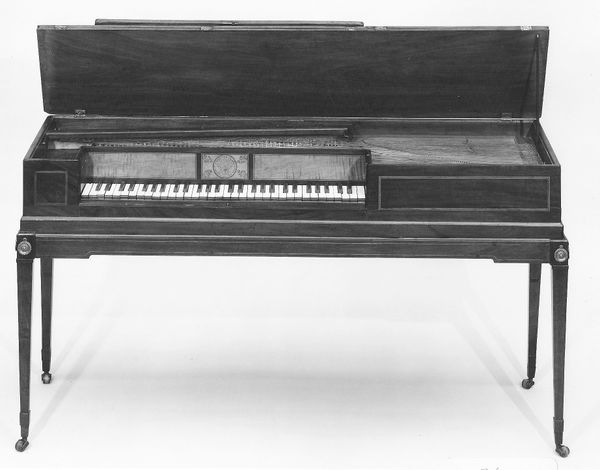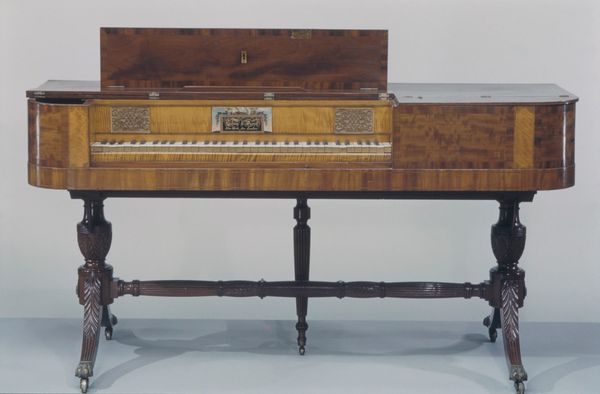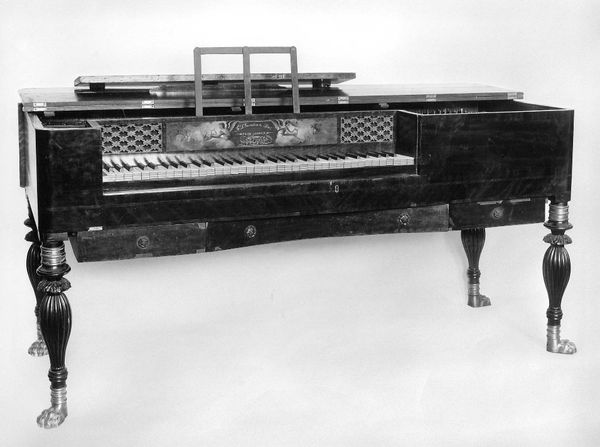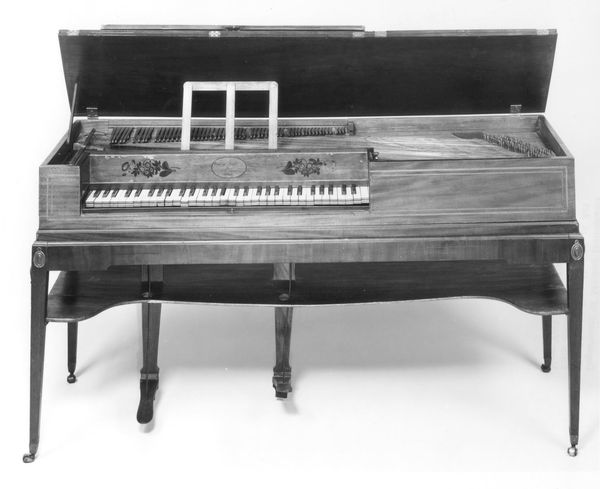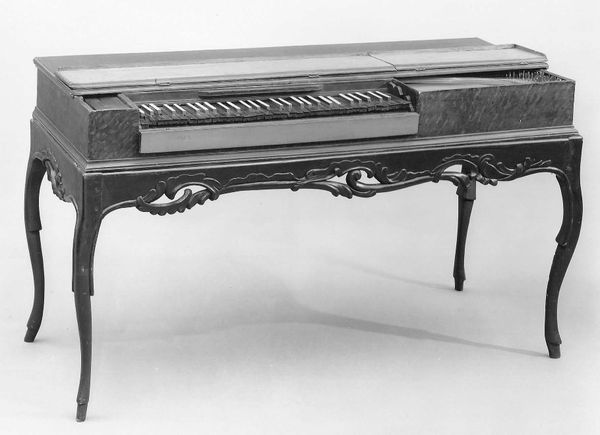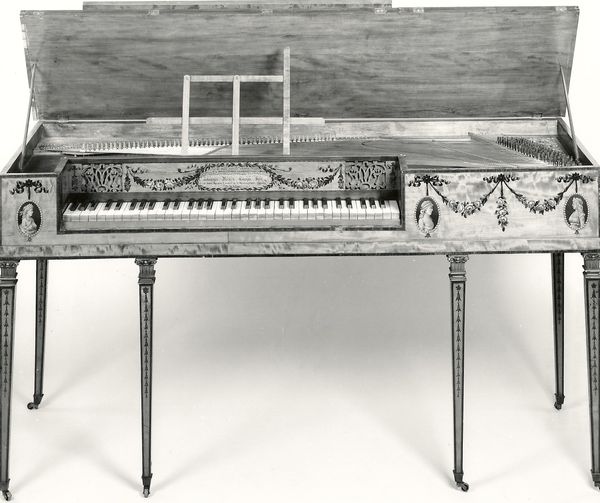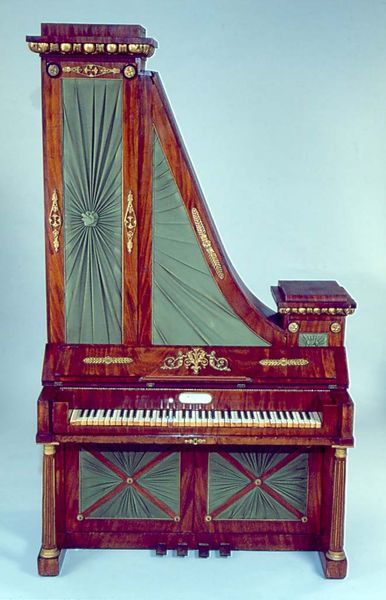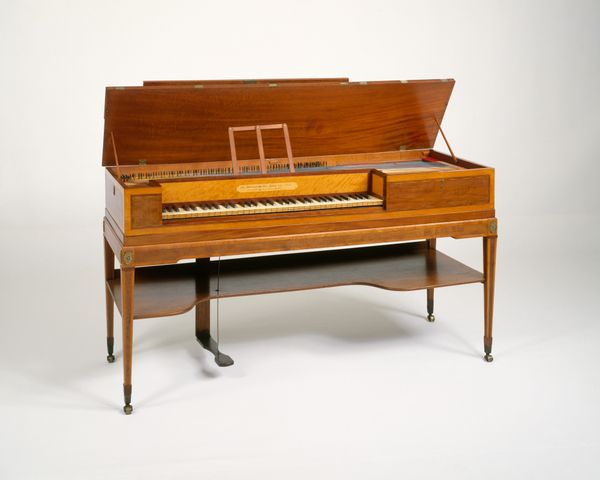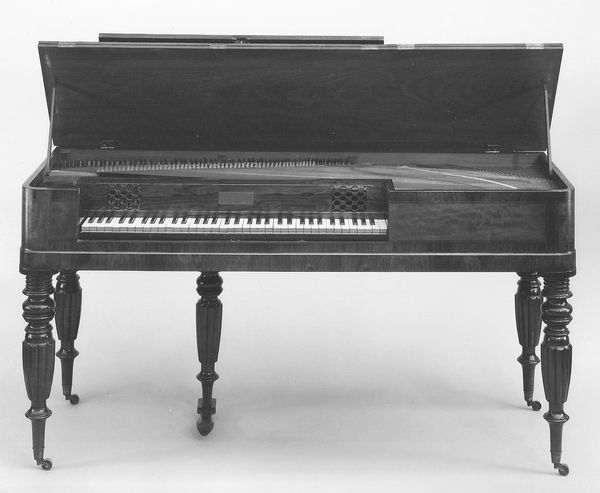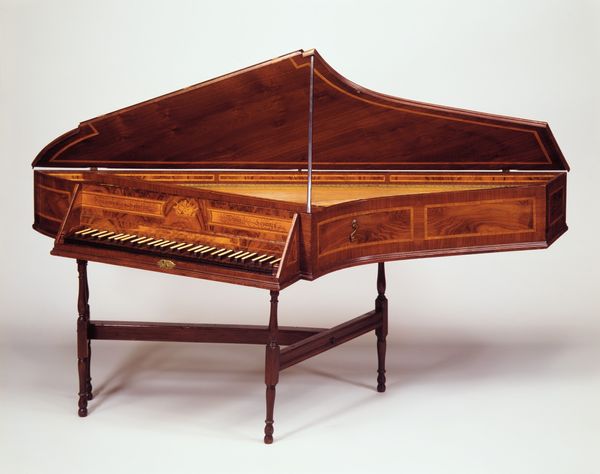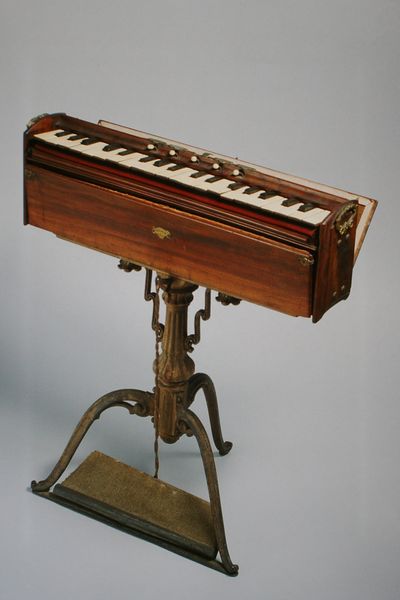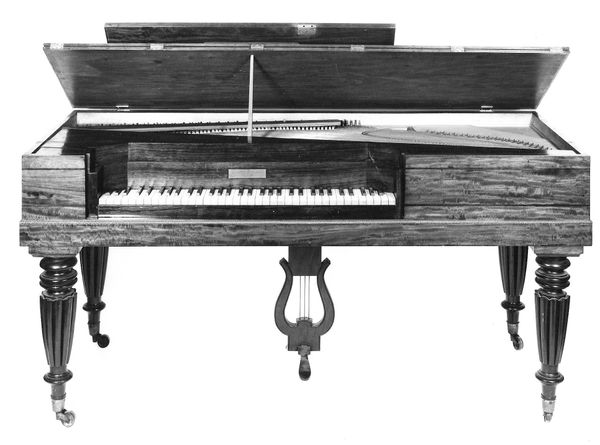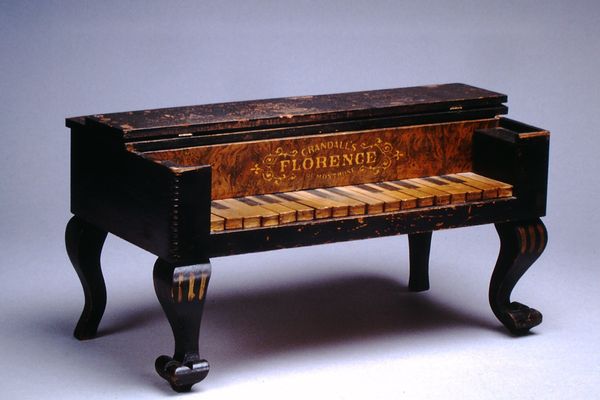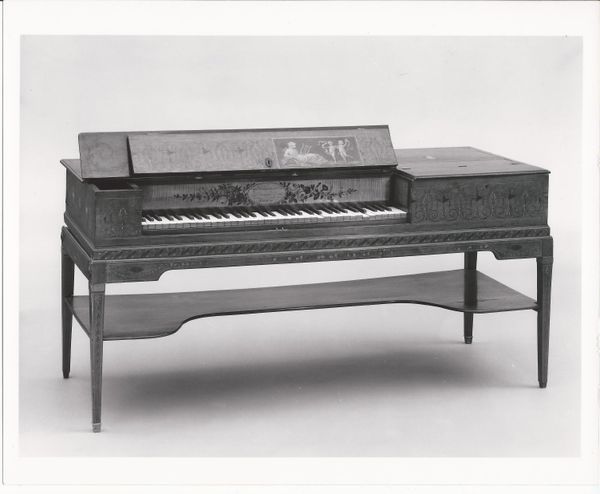
metal, sculpture, wood
#
metal
#
sculpture
#
traditional architecture
#
sculpture
#
architecture
#
wood
#
musical-instrument
Dimensions: Instrument: 174cm x 73cm x 39cm Legs (X4): 53cm (and thread) x 12cm x 12cm
Copyright: Public Domain
Curator: Before us is a square piano, crafted between 1820 and 1830 by Loud & Brothers. Its home is now here at the Metropolitan Museum of Art. Editor: It's stunning! The dark wood contrasted with those gleaming, almost excessive gold flourishes creates a dazzling impression. Curator: Excess reflecting the rising affluence in that era, perhaps? Let’s consider the materiality further—the wood, undoubtedly a carefully selected hardwood, would have been incredibly expensive. The labor involved in its shaping, polishing, and ornamentation speaks to the craftsmanship valued during the period of its making. What kind of workforce would they use and how would they source the expensive wood? Editor: Materiality is definitely a major key in approaching the art, as I was saying earlier! I appreciate how the linear structure of the piano, from its rectangular body to the carefully aligned keys, provides a rigid framework for those swirling, organic, almost Rococo gold leaf patterns. How did it balance geometric precision and almost ecstatic ornamentation, and how can it tell us the cultural taste? Curator: A lovely tension! The construction likely involved distinct divisions of labor; specialists would have handled the cabinetwork, the key making, and, of course, the intricate gilt detailing. Understanding the organization of this creative work highlights shifts within both American industry and artisanship. This could well suggest, how music making started shifting from court to urban settings where specialized craftsmen created new musical culture. Editor: Looking closely at the legs, notice their strong, decorative quality, giving the impression of holding up both an instrument and a piece of visual performance! It really makes you wonder about its original setting, perhaps a parlor intended to impress and entertain in domestic spaces. Curator: Precisely. This wasn't merely an instrument, but also a statement, a display piece intimately entwined with social aspiration. To see all those architectural traits built onto a musical instrument makes me see the era where music entered social scenes through craftsmanship and technology. Editor: The marriage of craftsmanship and technology as the core. Seeing it in this light really emphasizes its inherent opulence. Curator: Indeed. Examining such artifacts through the lens of labor and material conditions helps unlock a deeper comprehension of the aesthetic choices and social functions they embodied. Editor: And approaching them with an aesthetic understanding illuminates cultural dynamics within those contexts of craftsmanship and production. Thank you.
Comments
No comments
Be the first to comment and join the conversation on the ultimate creative platform.
